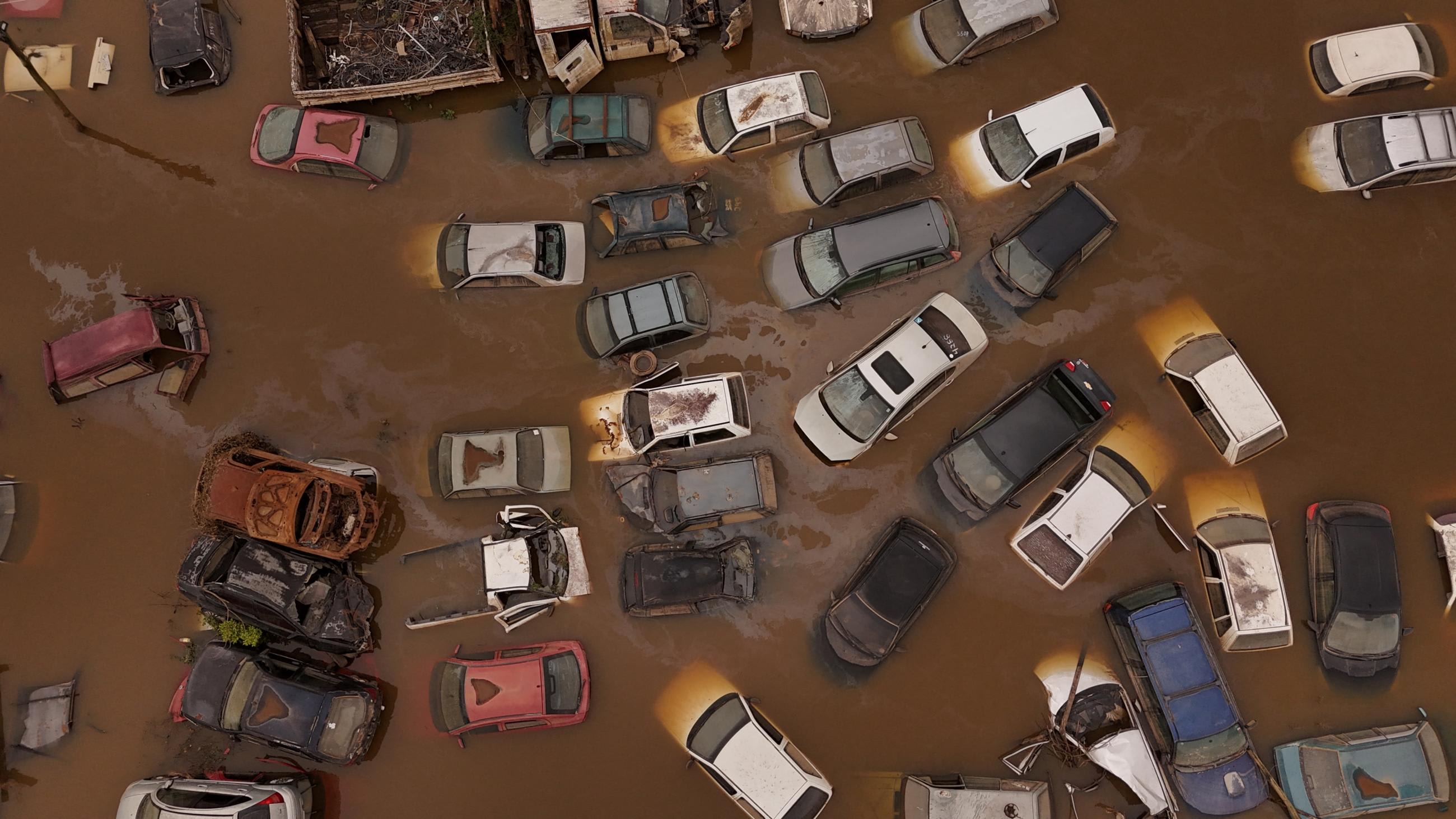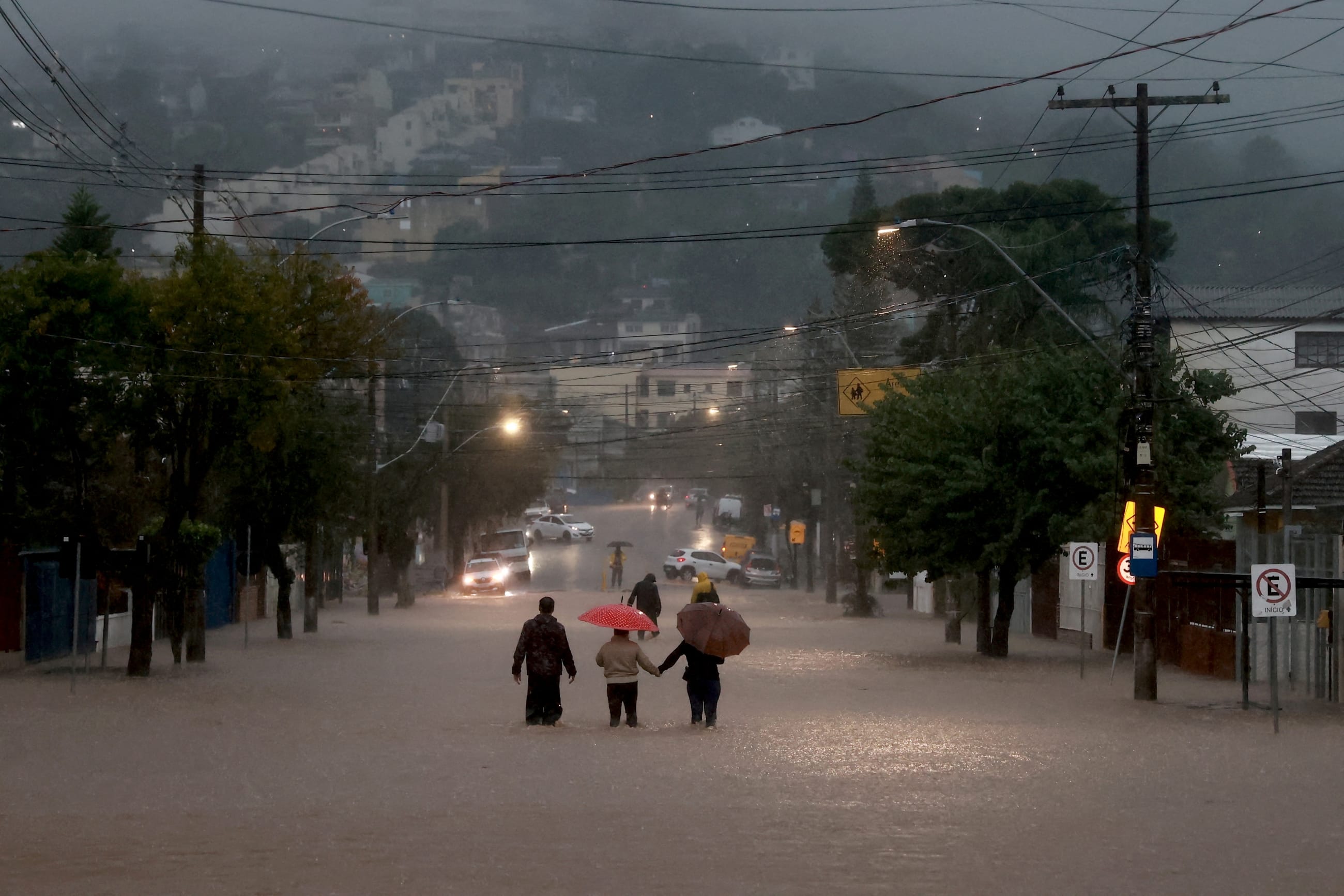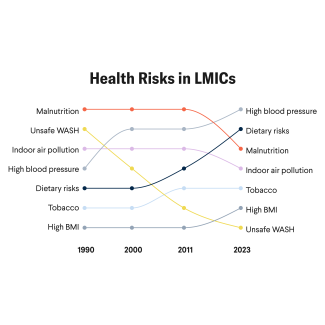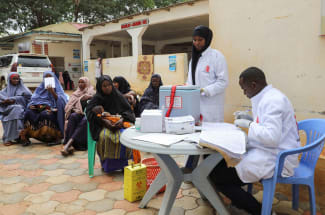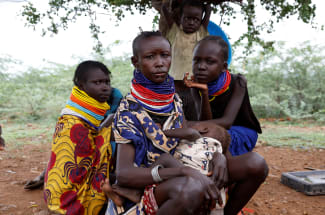When historic rains in April and May washed over Rio Grande do Sul, Brazil's southernmost state, many of its residents lost everything.
Left to be evacuated in boats and on jet skis by emergency services, they hadn't expected the water overflowing from the region's intricate web of rivers to rise so quickly or so high, sweeping away their homes, their businesses, and everything inside they had collected over the years.
According to a study from World Weather Attribution (WWA), three factors played a role in causing the floods and exacerbating their impacts: climate change, El Niño, and a failure to put policies in place to prepare for what experts had for years warned would result in devastation. Climate change, it notes, made the floods twice as likely and nearly 10% more intense.
Although environmental protection laws in Brazil protect waterways from construction and limit land-use changes, they are not consistently applied or enforced, increasing people's and infrastructure's exposure to flood risks.
"Changes in land use have contributed directly to the widespread floods by eliminating natural protection and can exacerbate climate change by increasing emissions," Regina Rodrigues, a researcher at the Federal University of Santa Catarina in Florianopolis, who took part in the WWA study, told the IFRC's Climate Centre.
Climate change made the floods twice as likely and nearly 10% more intense
In the state's capital city, Porto Alegre, the lack of a significant extreme flood event until recently led investments and maintenance in its flood-protection system to be reduced, leaving it to reportedly fail at 4.5 meters of flooding, a far cry from its stated capacity of 6 meters.
Rio Grande do Sul's governor, Eduardo Leite, has been criticized since the record-breaking floods for cutting or altering 480 items of the state's Environment Code in 2019, the first year of his first mandate. Its budget to combat natural disasters was just 9% of what was initially promised, and by the end of April it had used 5% of what was available.
Where the Floods Strained Health and Health Care
As residents tried to survive on donations arriving from across the country and around the world, they slept in emergency shelters set up in everything from soccer stadiums and shopping malls to schools and churches—and contemplated where they would be able to restart their lives now that not only their homes, but also much of the infrastructure of their towns and cities was gone.
Hospitals and health centers transferred patients and closed their doors as the water rose. By mid-May, more than 4,000 health-care workers in Porto Alegre were unable to work because of the floods, and several hospitals that were able to keep their doors open suspended elective procedures in order to focus on the emergency situation.
Eventually, the close quarters people were living in at shelters and the stagnant water surrounding them would result in the spread of a variety of communicable, vector-borne, and contact- and contamination-related diseases that would put even more pressure on the struggling public health-care system.

As of the end of June, 43 people in Rio Grande do Sul died of leptospirosis, a bacteria-based disease spread by contact with contaminated animal urine and common in the aftermath of floods. The state registered 737 confirmed cases of the illness, which often infects people when contaminated water contacts the eyes, nose, mouth, or broken skin—causing flu-like symptoms, including fever, red eyes, muscle aches, and vomiting.
Experts warned that the loss of basic sanitation due to the floods could lead to an increased number of cases of illnesses related to the consumption of contaminated food and water, including Hepatitis A, typhoid fever, gastrointestinal viruses, and bacterial infections.
The rising flood waters, which sat stagnant across the state for days before beginning to drain, created ideal conditions for the propagation of insects, including the Aedes aegypti mosquito, which can transmit diseases such as Zika, chikungunya, and dengue, which Brazil is already suffering record-breaking epidemics.
Venomous animals such as snakes, spiders, and scorpions have become more of a concern as they've been pushed out of their habitats and homes by the flood waters, as have mammals that could transmit rabies.
Close quarters in shelters have upped the chances of the spread of respiratory illnesses, including flu and COVID-19, leaving experts to reiterate the importance of vaccinating against both diseases as well as others with an increased chance of transmission due to the conditions residents of Rio Grande do Sul were left to live in following the disaster.
The lack of preparedness for climate-related flooding and its public health consequences is what has left experts baffled
Brazil's federal, state, and municipal governments have attempted to keep up with the health-care necessities of the population since heavy rains affected almost 95% of the state's cities and displaced 615,000 people. Its Ministry of Health sent Rio Grande do Sul an extra 300,000 doses of vaccines against tetanus, diphtheria, Hepatitis A and B, whooping cough, meningitis, rotavirus, measles, mumps, rubella and rabies. The lack of preparedness for climate-related flooding and its public health consequences is what has left experts baffled.
"The devastating impact on human systems from such extreme events can only be minimized with sufficient adaptation, including well-maintained flood protection infrastructure and appropriate urban planning," Rodrigues said.
Missed Forecast
Forecasts and warnings of the floods were available nearly a week before they occurred, but neither reached all those at risk nor conveyed the severity of the situation. During a June 2022 municipal public hearing in Pelotas, a town in Rio Grande do Sul, ecologist Marcelo Dutra da Silva, a professor at the Federal University of Rio Grande, warned that "entire cities in Rio Grande do Sul will have to be moved" because of the state's lack of preparation for the heavy rains and flooding he knew would come as a result of a study he conducted based on data dating back to 2013.
"At some point, we're going to start seeing [flooding] in areas where water didn't reach as often before and we're going to remember what we're talking about here," he told the BBC. "We can't prevent climate events from happening, because they will happen. But can we be more resilient to them? Yes. Maybe we can move people from the highest risk areas. It is possible to know where events will be most serious first."
Brazil's Congress and Senate have been blamed for the tragedy in Rio Grande do Sul and others expected to come as members vote to do away with conservation areas and Indigenous territories, both currently protected from extractive industries under federal law, as well as the environmental licensing law, which oversees these activities in areas that permit them.
Failure in both creating and implementing policies to prepare for climate-related flooding and other disasters have occurred at all levels of Brazil's government, keeping the consequences that follow, including the many related to public health, off the table. If the cause isn't addressed, the effects won't ever be on the agenda.
